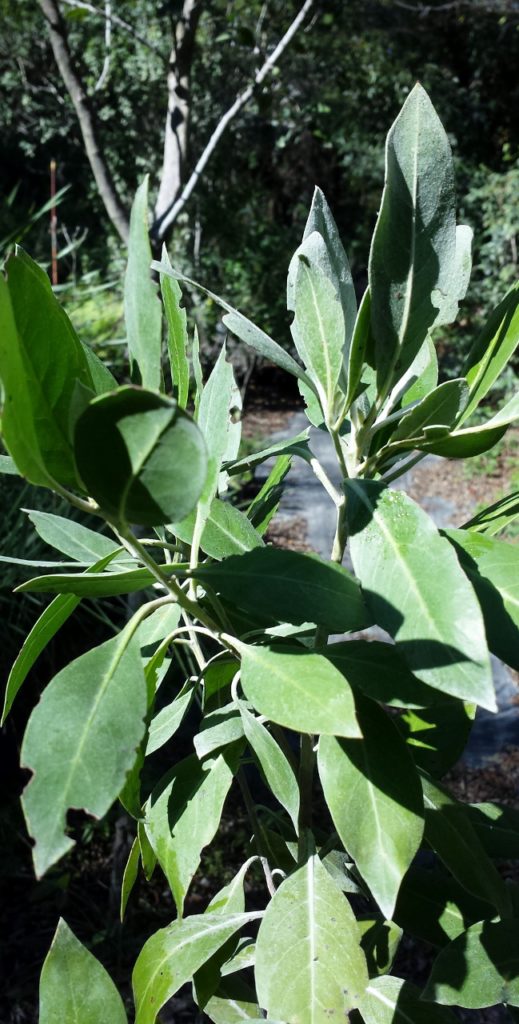
Silver Buttonwood
Conocarpus erectus var. sericea
The above picture is of a Silver Buttonwood that I found in the Florida Keys. It is not as silvery as the commercial form, yet it provides a relief from the monotony of having one clone used over and over again.
Silver Buttonwood is not really a separate variety, it simply has silver hairs on the leaves and will not come true to seed. It is found naturally in the lower Florida Keys on the higher ground of mangrove swamps.
Both the Green and Silver Buttonwood grow together. Look for various amounts of silver in the Buttonwoods when exploring the lower keys. You may find some with just a little on the new growth and some that are quite silver.
I have not found the platinum color of the commercial Silver Buttonwood anywhere in nature and wonder if this widely used clone is truly native to Florida. It occurs throughout much of the Caribbean region and western Africa.
Silver Buttonwood becomes a 40 foot tree with spreading twisted branches that have moderately thick bark. This makes it a great anchor for bromeliads and orchids. Charcoal from the wood is excellent.
Both the Green and Silver Buttonwood can be used as a hedge plant, but need constant pruning. The Silver will die if planted in too much shade. Better to use both as small trees and plant slower growing, more compact plant species as shrubs.
The fragrant male and female flowers occur on separate plants, although some male flowers will have an ovule. It has been recently observed that the Miami Blue butterfly lays its eggs on Green Buttonwood and goldfinches eat the seeds.
If you are looking for a tree that can tolerate short term salt water flooding, and regular salt air near the dune crest, then this is one of your best choices. On the dune crest mix with Sea Grape, Beach Cocoplum, Native Scaevola, Randia, Sea Lavender and Bay Cedar.
When planting near salt marshes, try a mixture of Silver and Green Buttonwood, Black and White Mangrove, Rhacoma, Limber Caper, Christmas Berry, and Sea Oxeye Daisy.
I have noticed that Buttonwoods growing along mowed roadsides in the Keys adapt by becoming low like a Juniper.
If you remove upward growing shoots, you can train Silver or Green Buttonwood to become a groundcover. Try this with Beach Cocoplum, Beach Creeper and Blackbead for an unusual roadside edging.